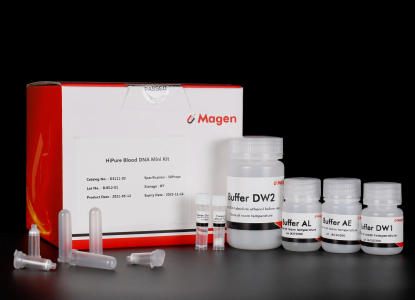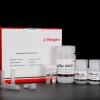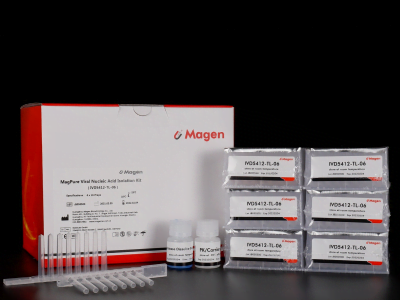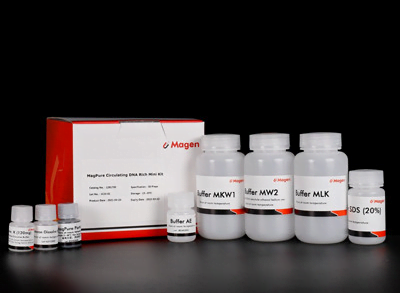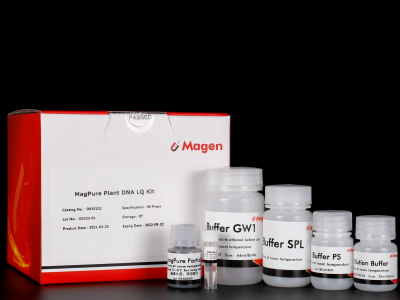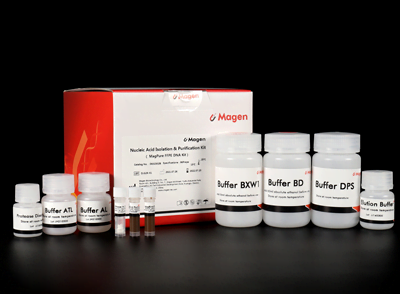Introduction
Blood is a valuable source of DNA for various clinical applications and research studies. Cependant, extracting DNA from blood samples presents several challenges:
Safety Concerns:
- Blood samples can harbor pathogens, posing a risk of infection to researchers and contaminating the lab environment.
- Traditional methods often involve hazardous chemicals like phenol-chloroform.
DNA Loss:
- Removing red blood cells, a common pre-treatment step can lead to the loss of desired DNA fractions like viral DNA, circulating DNA, and microbial DNA.
Impurities and Inhibitors:
- Blood contains various components that can interfere with downstream analyses like RAP and Southern blotting.
New Technology for Improved Blood DNA Extraction:
This product offers a novel approach to address these challenges:
- Safe and Efficient: The method eliminates the need for red blood cell removal, minimizing infectious waste and potential contamination.
- Comprehensive DNA Recovery: The protocol allows for the purification of total DNA, including genomic, mitochondriale, viral, and circulating DNA, providing a more complete picture for analysis.
- Broad Sample Compatibility: The method effectively purifies DNA from various blood components like whole blood (fresh or frozen), plasma, sérum, couche leucocyto-plaquettaire, et plus.
- Downstream Applications: The extracted high-quality DNA is suitable for reliable PCR and Southern blotting analyses.
This innovative solution simplifies blood DNA extraction while ensuring safety, efficiency, and comprehensive DNA recovery. It represents a significant advancement for researchers working in various fields like diagnostics, forensics, and medical research.
Caractéristiques
| Caractéristiques | Caractéristiques |
| Fonctions principales | Isolation total DNA from 200ul Whole Blood |
| Applications | RAP, boulon du sud et détection de virus, etc. |
| Méthode de purification | Mini spin column |
| Technologie de purification | Technologie de la silice |
| Méthode de processus | Manuel (centrifugation ou vide) |
| Échantillon type | Whole Blood (fresh or frozen), sérum, plasma, milk, saliva, and other liquid samples and cultured cells |
| Montant de l'échantillon | <200μl whole blood or other liquid samples, <5*106 lymphocytes or Culture Cells Non-mammalian animals that have a nucleus in red blood cells (rich in DNA, such as birds and fish): 5~20μl whole blood at a time. |
| Volume d'élution | ≥20μl |
| Temps par course | ≤30 minutes |
| Volume de liquide transporté par colonne | 800µl |
| Rendement de liaison de la colonne | 100µg |
Principe
Efficient DNA Purification with Silica Column Technology
This product utilizes a silica column-based method for rapid and efficient DNA purification. Here’s a breakdown of the process:
- Sample Lysis and Digestion: The sample is treated with a lysate solution and protease to break down cell membranes and degrade proteins. This releases DNA into the solution.
- Binding to Silica Membrane: The lysate containing the DNA is transferred to a silica column. The silica membrane in the column specifically binds DNA molecules through favorable interactions. Proteins and other impurities remain unbound.
- Washing: Wash buffers are passed through the column, removing unbound proteins and cellular debris that did not adhere to the silica membrane.
- Elution: Finally, a low-salt buffer (typically 10 mM Tris, pH 9.0, et 0.5 mMEDTA) is used to elute the purified DNA from the silica membrane. This buffer disrupts the interaction between DNA and the silica, allowing the purified DNA to be collected in a separate tube.
Avantages
- High-quality DNA – meets a variety of downstream applications, including PCR, qPCR, enzyme digestion, hybridization, etc..
- Rapide – without separation of leukocytes, organic extraction, or ethanol precipitation
- Simple – all nucleic acids can be obtained by direct digestion
- Large applicabilité- handle a variety of liquid samples
Contenu du kit
| Contenu | D311102 | D311103 |
| Temps de purification | 50 | 250 |
| HiPure DNA Mini Columns I | 50 | 2 X 125 |
| 2Tubes de prélèvement ml | 100 | 5 X 100 |
| Tampon AL | 15 ml | 60 ml |
| Buffer DW1 | 30 ml | 150 ml |
| Tampon GW2* | 12 ml | 50 ml |
| Protéinase K | 24 mg | 120 mg |
| Tampon de dissolution de protéase | 1.8 ml | 10 ml |
| Tampon AE | 15 ml | 60 ml |
Stockage et stabilité
For optimal performance:
- Store Proteinase K at 2-8°C (refrigerator) upon arrival.
Acceptable short-term storage:
- Proteinase K can be stored for up to 12 weeks at room temperature (15-25°C) without affecting its performance.
Remaining kit components:
- Store all other components of the kit dry at room temperature (15-25°C).
- They are stable for at least 18 mois dans ces conditions.
Important Note:
- If storing the entire kit at room temperature, ensure buffers are redissolved before use and always warm all buffers to room temperature before using them.
